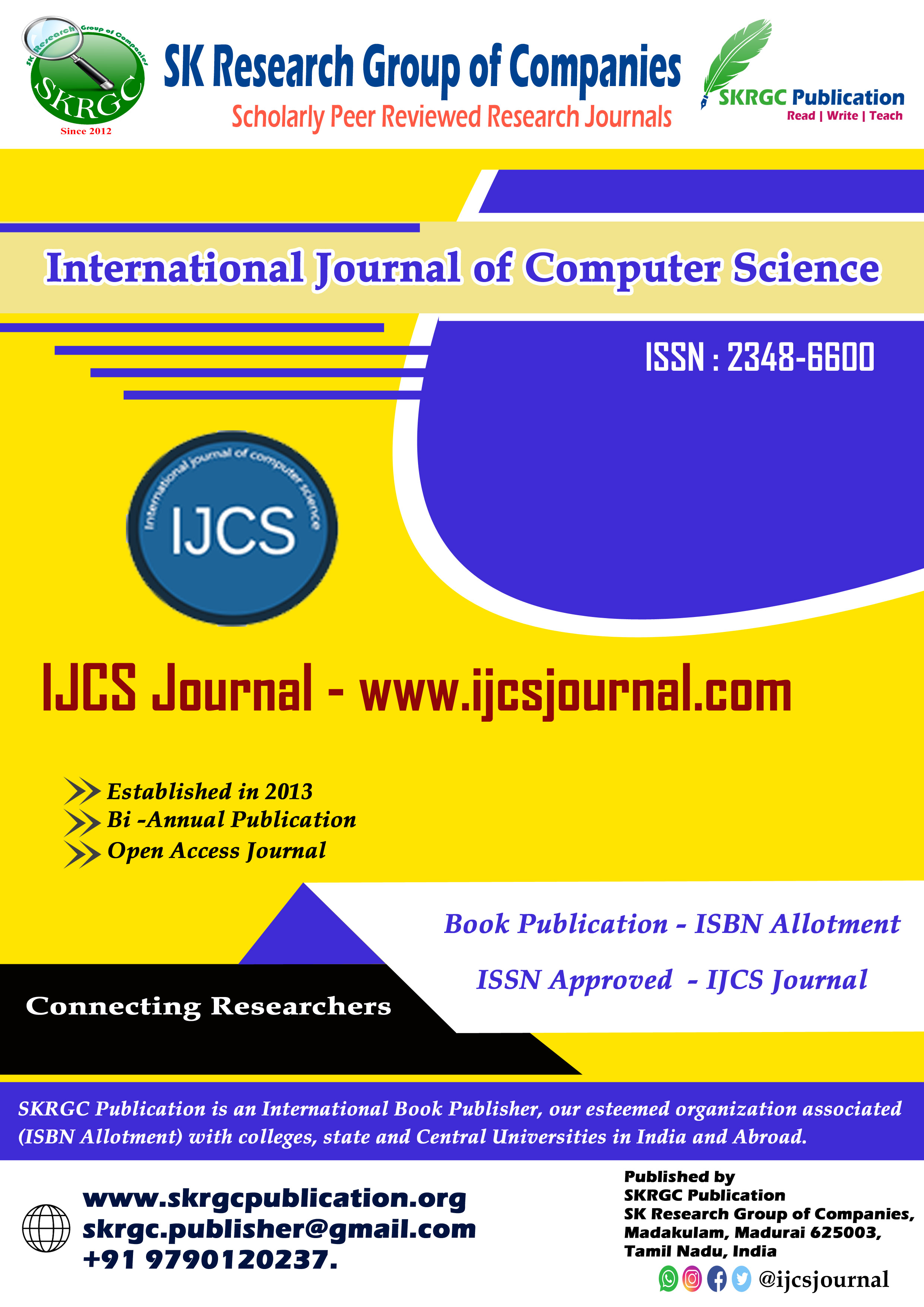MINING USER AWARE RARE SEQUENTIAL TOPIC PATTERNS IN DOCUMENT STREAM
International Journal of Computer Science (IJCS) Published by SK Research Group of Companies (SKRGC).
Download this PDF format
Abstract
Among various multi keyword and sequential topic semantics, we choose the efficient similarity measure of “coordinate matching”, i.e., as many matches as possible, to capture the relevance of data documents to the search query. During the index construction, each document is associated with a binary vector as a sub-index where each bit represents whether corresponding keyword is contained in the document. We implement STP (Sequential Topic Pattern) which captures both combinations and orders of topics and compared to document-based patterns, topic-based patterns contain abstract information of document contents and are thus beneficial in clustering similar documents and finding some regularities about Internet users. STPs happen to be able to combine a series of inter-correlated messages, and can thus capture such behaviors and associated users. We propose a probability model that can capture the normal mentioning behavior of a user, which consists of both the number of mentions per post and the frequency of users occurring in the mentions. Then this model is used to measure the anomaly of future user behavior. Using the proposed probability model, we can quantitatively measure the novelty or possible impact of a post reflected in the mentioning behavior of the user. We aggregate the anomaly scores obtained in this way over hundreds of users and apply a recently proposed change point detection technique based on the sequentially discounting normalized maximum-likelihood coding. This technique can detect a change in the statistical dependence structure in the time series of aggregated anomaly scores, and pinpoint where the topic emergence is; the proposed approach can detect changes in the communication patterns of users even in a realistic setting when only some part of the users reacts to the emerging topic.
References
[1] R. Agrawal and R. Srikant, “Mining sequential patterns,” in Proc. IEEE ICDE’95, 1995, pp. 3–14.
[2] J. Allan, R. Papka, and V. Lavrenko, “On line new event detection and tracking,” in Proc. ACM SIGIR’98, 1998, pp. 37–45. [4] T. Bernecker, H.-P. Kriegel, M. Renz, F. Verhein, and A. Zuefle, “Probabilistic frequent itemset mining in uncertain databases,” in Proc. ACM SIGKDD’09, 2009, pp. 119–128.
[3] D. Blei and J. Lafferty, “Correlated topic models,” Adv. Neural Inf. Process. Syst., vol. 18, pp. 147–154, 2006.
[4] D. M. Blei and J. D. Lafferty, “Dynamic topic models,” in Proc.
[5] D. Blei, A. Ng, and M. Jordan, “Latent Dirichlet allocation,” J. Learn. Res., vol. 3, pp. 993–1022, 2003.
[6] J. Chae, D. Thom, H. Bosch, Y. Jang, R. Maciejewski, D. S. Ebert, and T. Ertl, “Spatiotemporal social media analytics for abnormal event detection and examination using seasonal-trend decomposition,” in Proc. IEEE VAST’12, 2012, pp. 143–152. [9] K. Chen, L. Luesukprasert, and S. T. Chou, “Hot topic extraction based on timeline analysis and multidimensional sentence modeling,” IEEE Trans. Knowl. Data Eng., vol. 19, no. 8, pp. 1016–1025, 2007.
7] C. K. Chui and B. Kao, “A decremental approach for mining frequent itemsets from uncertain data,” in Proc. PAKDD’08, 2008, pp. 64–75.
[8] W. Dou, X. Wang, D. Skau, W. Ribarsky, and M. X. Zhou, “LeadLine: Interactive visual analysis of text
data through event identification and exploration,” in Proc. IEEE VAST’12, 2012, pp. 93–102.
[9] G. P. C. Fung, J. X. Yu, P. S. Yu, and H. Lu, “Parameter free bursty events detection in text streams,” in Proc. VLDB’05, 2005, pp. 181–192.
Keywords
Sequential Topic Pattern, probability model, Secret Key, Search Data.

